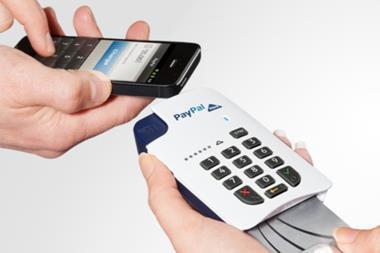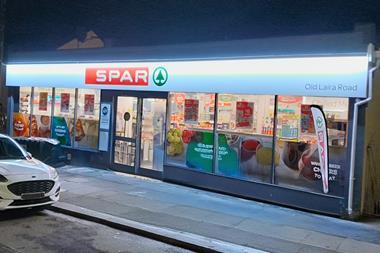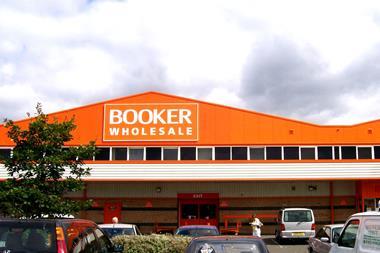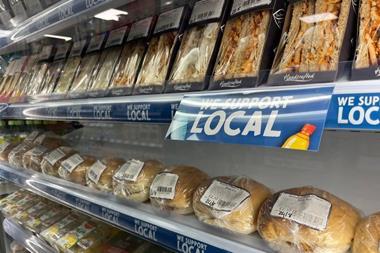Can you afford to ignore a potential 3% boost to your profit? Aidan Fortune makes the case for installing epos
Running a convenience store in the current economic climate is a tough business and every penny counts. So if there was a way to make your job that bit easier while increasing your profits, you’d go for it, wouldn’t you?
If you answered ‘yes’ then epos is for you, with its promises of transforming your business.
Ibrar Aziz of Turners Food & Wine, Dewsbury, West Yorkshire, installed a Torex epos system last November, and is already won over.
“It’s definitely been worth it,” he says. “I was faced with the choice of either hiring another member of staff to deal with the number of customers, or install an epos system that would help streamline my business.”
Ibrar plumped for the epos and hasn’t looked back. “I’m still learning how to get the most out of the system, but it has helped with stock and reducing pricing errors. I understand that other systems such as security cameras can be connected to an epos system - I’ll be looking at that in the near future. I certainly won’t be changing back.”
Richard Holder of Reposs Ltd points out that retailers who invest in epos should see a return on their money quite quickly. “The main benefit is a minimum of 3% increase in profits, and retailers can get a return on investment in as little as six months with the right system,” he predicts. “That return on investment comes from two sides - first, getting control and, second, using the information the system provides to make informed decisions. If you don’t know exactly what’s selling and what you have in stock, how do you know what
to order? If you cannot get your cash register to balance and if staff or family ask you for prices all
the time, what do they do when you’re not there?
“Good modern epos systems enable you to start getting these benefits from day one and you will be able to provide control and information across all of your product lines and services.”
How epos can help you gain that extra 3%
Stock control: Provides automatic monitoring of shelf-lives of products and notifies the retailer; helps with stock rotation and reduces shrinkage
Security: Can be integrated into a CCTV system to give a visual record of each transaction to ensure all products are being properly scanned, reducing shrinkage
Shorter queues: Helps staff serve customers quicker and reduces frustration in queues
Managing staff: Retailers can properly identify key sales periods and ensure they have the correct number of staff employed to serve
Integration: Allows for better integration of contactless payment and Chip & PIN systems, enabling the retailer to offer more services to customers
Torex vice-president of petrol and convenience Jon Dunman believes retailers shouldn’t overestimate the impact of epos. “I think that any business would struggle without epos,” he says. “The retail industry has been transformed dramatically over the past decade with the advancements in product packaging, retail technology and customers’ increasing demands.
“They expect a lot from retailers, and epos allows those who use it to its full capabilities to meet and exceed these expectations.”
He adds: “As a shop owner you should not only ensure you have an epos system, but also think carefully about what you need to be doing with it to run an efficient business. Stock control, stock loss/waste, automatic ordering, golden lines and margins are just some of the elements that can be managed through your epos to drive profits. Once the profits are rolling in you’ll see why epos is the most successful innovation for convenience stores.”
Despite the obvious draw, there is still a sizeable chunk of convenience store retailers who are operating without an epos system. Holder says that penetration varies across the convenience sector. “You have retailers who have used epos for years and are hungry for new technology, then you have retailers who have never used a computer and want to know why they should get one, with everything in between,” he says. “Most market research we have carried out or seen suggests overall about 35-40% of c-stores use epos, but it varies hugely in different areas of the sector, such as symbol stores where the percentage is more like 70-80% epos penetration.”
Triquestra managing director Ian O’Rorke says even retailers who have an epos system aren’t always using it to its potential. “Most don’t use it fully - they use it as a glorified till with a few reports,” he says. “Our mission is to develop intuitive software around the retailers’ needs so that it’s very simple to plan and make decisions that will maximise their profits. For example, one retailer has massively increased his bread sales through epos. Rather than simply placing his usual daily order, he has realised that he regularly runs out of certain brands, while others go unsold. He has amended his order electronically and now provides exactly what his customers want.”
When Dike & Son in Dorset opened a new, larger store recently, the team realised their current epos system wasn’t up to scratch. So they upgraded and learned how to use it fully. “When we moved to a larger store we had a lot more stock to manage,” explains company director Adam Vincent. “We needed a system that would help us keep track of it better.”
He says that the time it takes to order products has been dramatically reduced. “Ordering was previously done manually,” says Adam. “Now staff use handheld guns to scan and order stock. The time saved means staff are able to spend more time with customers, giving the personal touch we pride ourselves on.”
The epos upgrade has also meant Dike & Sons has added 0.5% to its bottom line. “It gives us a real insight into how our sales are doing and where we can make further improvements,” adds Adam.
What’s the next big thing?
Scanning products electronically may once have seemed ultra-futuristic, but the technology has become widespread in a short space of time. So what’s next?
Richard Goodall of PCMS believes that changes in the epos sector will be dictated by the evolution in how consumers pay. “Mobile payment will have most impact on convenience,” he says. “Last year Barclaycard and Orange joined forces to launch low-cost payments via mobile phones, and over the next five years being able to purchase bread and milk with your mobile is going to become commonplace. Retailers need to be using technology to keep themselves up-to-date in order to meet the changing demands of their customers.”
Nisa IT director Wayne Swallow says virtual servers such as ‘The Cloud’ will allow for greater access and mobility when it comes to epos. “The Cloud will clearly be more actively used in delivery of all software solutions, including epos,” he says. “Smartphone and tablet technology will also bring greater flexibility for system usage and consumer payments. Nisa is trialling the use of iPads by management teams to link with promotions and planograms, and provide staff with access to information to assist customers with enquiries.”
Toshiba senior manager for retail products Barry Cox agrees mobile technology is the one to watch. “There is an increasing move towards mobility, for example, the use of tablet technology for price and stock checking, as well as payment,” he says.
PCMS group sales and marketing director Richard Goodall says that the reason retailers haven’t embraced epos fully is because they don’t grasp the positives. “The main barrier is always going to be capital cost and the lack of understanding as to the true value that epos can deliver to a convenience retailer,” says Goodall. “For instance, epos has been able to demonstrate increased profits of 3% through better stock availability and promotions. So while purchasing an epos system may seem like a significant investment at the outset, it can and should pay for itself fairly quickly.”
However, retailers who haven’t switched on yet need to ensure they get the system that’s right for them, based on their needs rather than a system’s cost. Reposs’ Holder advises: “They should be asking which epos system is going to deliver the most cost effective benefits to their business,” he says. “So often retailers just look at the headline prices rather than the whole package. A lot of retailers go for what they think is the cheapest option and then come back to us asking if we can help, as the system they bought does not have the functionality they need.”
O’Rorke agrees. “Rather than asking ‘how much does this cost?’, they should be asking ‘how much will this system make for me?’”
He adds that there are three further questions a retailer should put to an epos supplier: Is training included? Is the system easy to use? What support do you offer after the system has been installed? “If the retailer is satisfied that these three elements are covered, there really is no further reason not to have an epos system.” •




























No comments yet